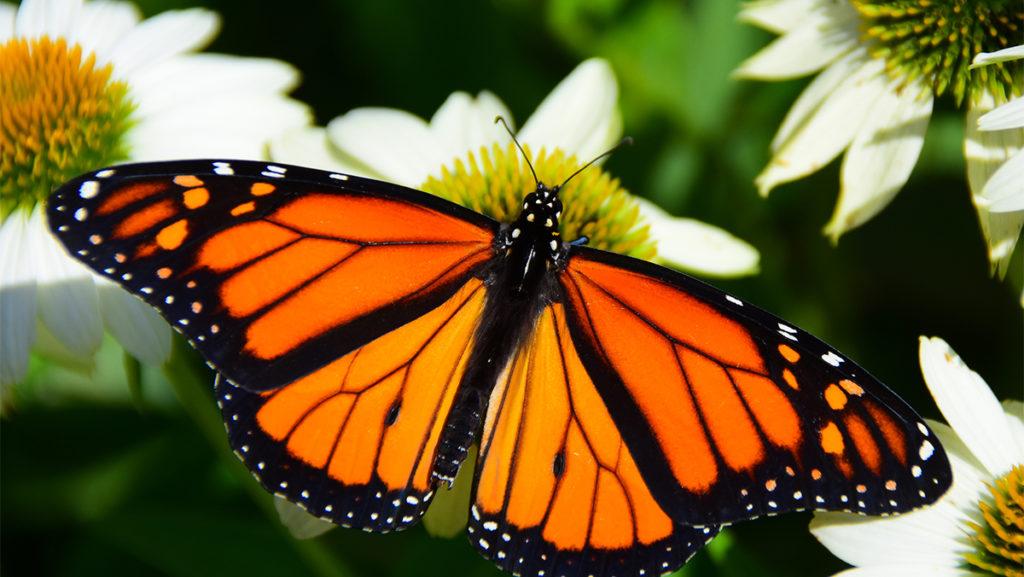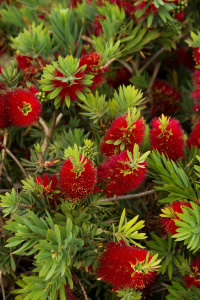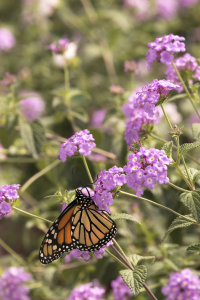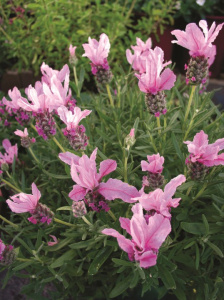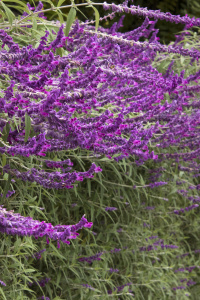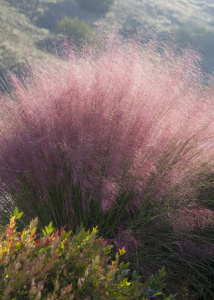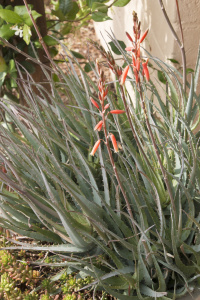Attracting bees, birds, butterflies and other wildlife to your garden is one of the best ideas. It helps to have a healthy, vibrant, sustainable landscape. The key is to plant a plot that provides and supports wildlife habitat year round, especially for birds.
Let’s start with the plants. To make this super-simple, we've graphed out three plants for each of the four seasons. These are ideal for supporting wildlife. Mix and match them for the look you want in your garden. As always, when it comes to perennials and shrubs, remember to plant in groups of three or more. (These are only a few of the many plants that are ideal for a wildlife habitat garden. Forage for more!)
(Be sure to check out the recommended plants for zones 3 – 5 and zones 6 – 8. Some plants can thrive in a wide range of zones.)
Spring

Little John Dwarf Bottlebrush
Zone: 8 – 11
Blood red blooms from spring through summer are beloved by butterflies and bees. Water-wise. Full sun.
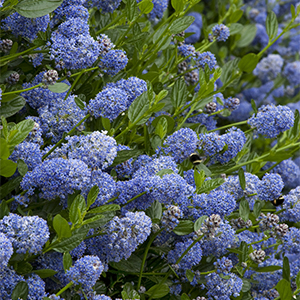
Victoria California Lilac
Zone: 8 – 10
Butterflies alight on cobalt-blue buds in late spring. Dense foliage provides cover for birds. Water-wise. Full sun.
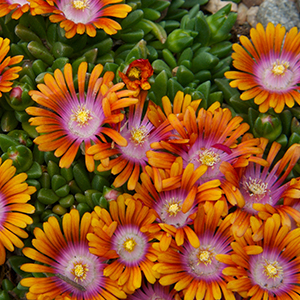
Fire Spinner® Ice Plant
Zone: 5 – 10
Butterflies and hummingbirds drink deeply from tri-colored flowers on a fast spreading mat. Water-wise. Full sun.
Summer
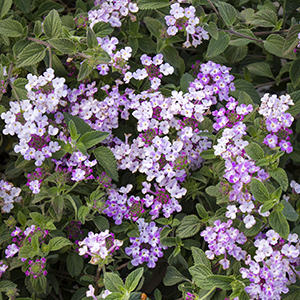
Lavender Swirl® Trailing Lantana
Zone: 9 – 11
Irresistible to nectar lovers including bees, moths, hummingbirds and butterflies! Water-wise. Full sun.
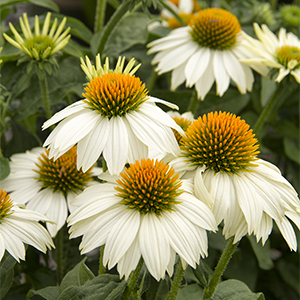
PowWow® White Coneflower
Zone: 3 – 10
Constantly surrounded by pollinators including bees, hover flies and butterflies. Water-wise. Full sun.
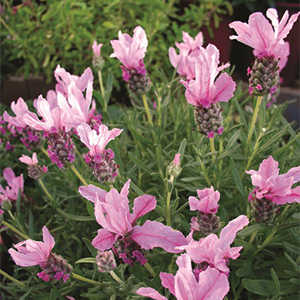
With Love™ Lavender
Zone: 6 – 10
Butterflies, bees, hummingbirds–everyone loves the scented blooms. Heat-tolerant variety. Water-wise. Full sun.
Fall
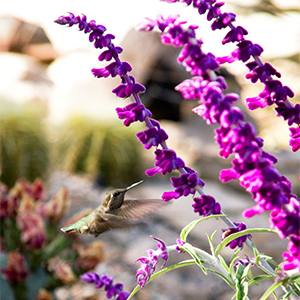
Santa Barbara Mexican Bush Sage
Zone: 9 – 11
Compact version with the same rich purple flowers that attract flocks of hummingbirds. Water-wise. Full sun.
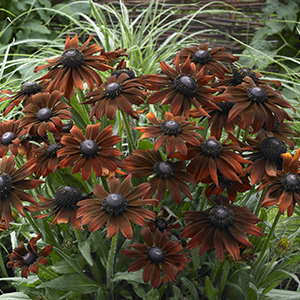
Echibeckia™ Summerina™ Brown
Zone: 6 – 10
Huge, long-lasting blooms means lots of nectar and pollen for hummingbirds, butterflies, and bees. Water-wise. Full sun.
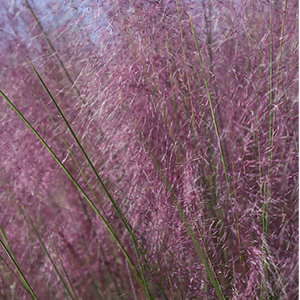
Plumetastic® Pink Muhly Grass
Zone: 7 – 10
Song birds and beneficial insects love the glittering purple clouds from late summer to fall. Water-wise. Full sun.
Winter
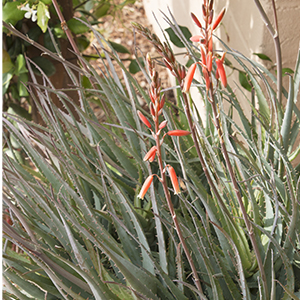
Blue Elf Aloe
Zone: 9 – 11
Bright orange, wintertime flowers are a favorite of hummingbirds. Water-wise. Partial to full sun.
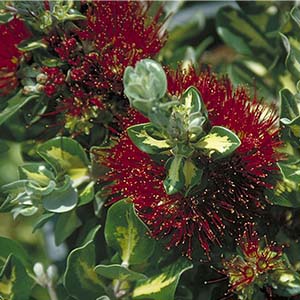
Variegated New Zealand Christmas Tree
Zone: 9 – 11
Small, tidy tree with rich crimson flowers whose nectar attracts hummingbirds and beneficial insects. Water-wise. Full sun.
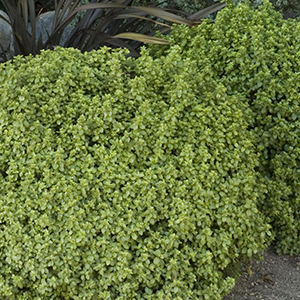
Golf Ball Kohuhu
Zone: 8 – 11
Inconspicuous flowers, but wow do they attract bees and butterflies! Great where boxwood fails. Water-wise. Full sun.
Tips for Attracting (and keeping) Wildlife to Your Garden
Here are five key elements you’ll need to provide (none of this is complicated, we promise!):
- Evergreens and conifers that will feed and shelter wildlife, especially birds, year round.
- Something blooming for as many months as you can manage. Many pollinators, especially bees, forage during the entire growing season.
- Shelter for nesting or from bad weather. (Leave a hedge untrimmed and a section of lawn unmowed. Pile grass cuttings in a sunny spot; provide some bare soil for ground nesting bees.)
- Limit your use of chemicals (both synthetic and organic) and use plenty of compost and mulch to build healthy soil. Healthy soils create healthy plants.
- Consistent source of clean, fresh water for drinking, bathing and breeding. And, speaking of water, butterflies love wet soil for sipping water and for the salts and mineral nutrients. A little dirty puddle is appreciated.
Here’s more information on attracting pollinators and a few more plants that are late summer bloomers.
